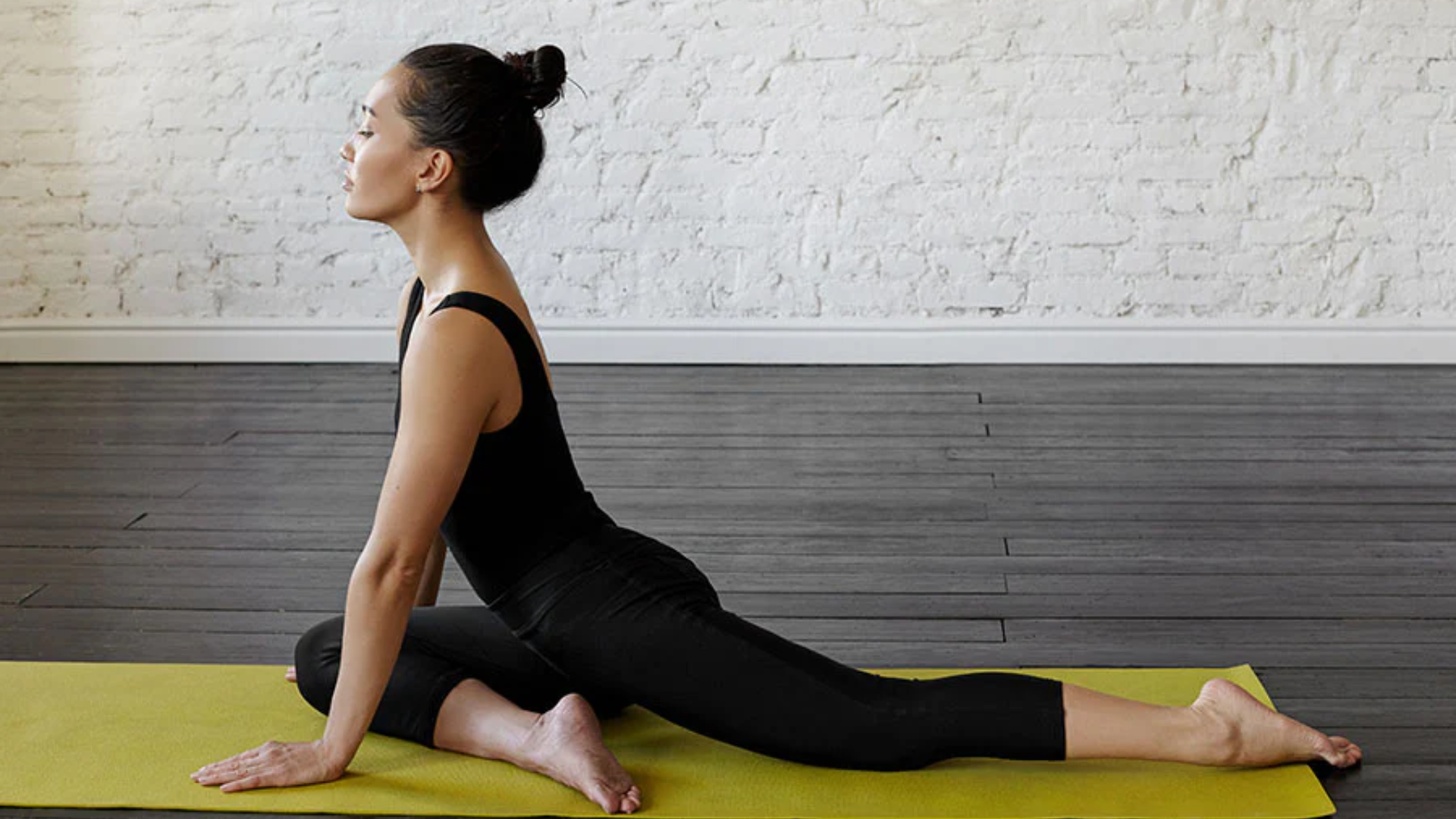
What Is Kapotasana
Kapotasana is pronounced Kah-poh-TAH-suh-nuh. It comes from the Sanskrit word “kapota,” which means pigeon, and “asana,” which refers to posture. Of course, the name brings to mind the much simpler Pigeon Pose, but Kapotasana is an advanced variation, requiring flexibility and strength as it is a deep backbend.
How to Do Kapotasana
Come Down onto Your Knees
Sit on your mat with your knees the width of your hips apart and the tops of your feet pressing into the ground.
Maintain tall posture of your spine, and let your body be sitting on your heels.
Lift and Lengthen
As you inhale, sweep your arms up toward the ceiling, expanding along the length of your spine.
Push your chest forward, so the upper curve of your back begins to arch.
Start to Lean Back
Exhale and slow lean backward while you keep your chest open. You might be able to hold onto your lower back at first for support.
If comfortably available, you can put your hands on your heels, or if a bit more possible, your hands will go on the back of the mat.
Push hips forward as in lifting chest while on the ground or heels.
Relax the neck either by staring at the ceiling or softly towards your back.
Use Your Legs and Core
The thighs have to be vertical, strong in order to support the lower back.
Activate your core muscles to stabilize and protect your spine.
Sustain the Pose
Kapotasana should be sustained for 5–10 breaths, while keeping an eye on the breath for remaining calm.
On each exhalation, you might try to relax deeper into the asana without forcing the relaxation.
There are several different forms to help you get out of the pose.
You can bring your arms down, keeping them raised, and bring your torso up while extending your spine.
Take a few breaths before you go back to your knees after letting your back and body adjust.
End
Benefits of Kapotasana
Flexibility
Kapotasana really stretches the chest, shoulders, and hips. Flexibility in the back, especially the hips increases with time; it also helps strengthen different poses.
Strengthening of the Spine
This posture also stretches the muscles around your spine, so that in a way, you improve your posture and you get relief from the tension created by bad sitting.
Opens the Chest and Heart Chakra
The deep opening of the chest in Kapotasana increases breathing capacity, though it’s more quoted to be used for stimulating the heart chakra, which has much to do with emotional release, love, and compassion.
Relieves Stress and Anxiety
Like many asanas which open up your heart, Kapotasana may evoke emotional unloading. This will make you feel light along with reducing stress and anxiety levels.
Boosts Circulation
The shape increases blood circulation around the body, mainly in the spine and chest. Healthy circulation will ensure all your organs receive enough oxygen, thereby making you more generally healthy.
It’s Here Eka Pada Rajakapotasana How to Do It and what are the Benefits
FAQs
Q: How long should I be in Kapotasana? \
A: 5–10 breaths for beginners; the more you hold this pose, the more flexible your body is.
Q: Can a beginner attempt Kapotasana? \
A: Yes, but so much safer if you’re practicing with a teacher, and the basic backbends have been practiced. Use props to modify the pose when necessary.
Q: I have a pin in my lower back. What should I do? \
A: Get out of the pose immediately. Feeling pain in the lower back is one of the ways your body will tell you that you’re going too deep too quickly.

